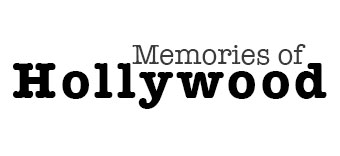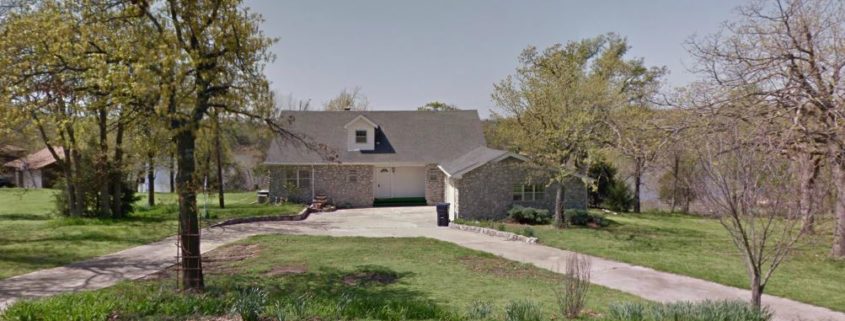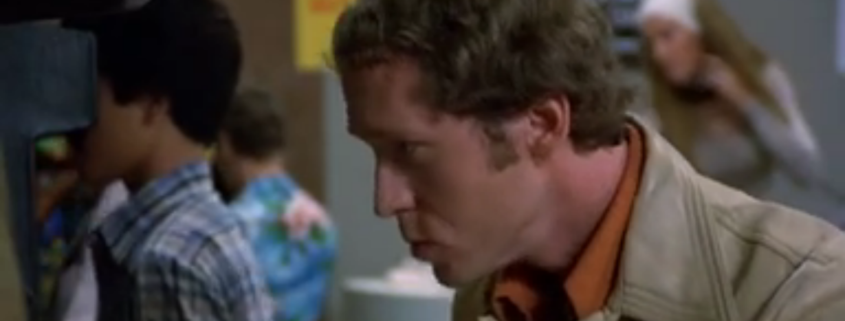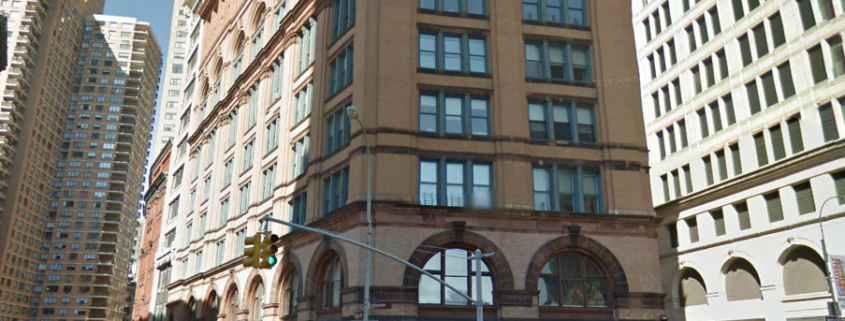I love to uncover incidental history. There’s a big piece of it at the intersection of Lafayette, East 8th and Astor in New York City. I’ve always known it for the Starbucks I frequented, where I’d sit with my coffee at an outward facing window, gently mocking south-bound commuters as they hurriedly/exhaustedly exited the Astor Place Station right in front of me. Sitting behind that glass always gave me an irrational and unwarranted feeling of security, as if I could see out but nobody could see in.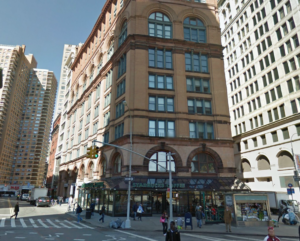
The building that still houses the Starbucks was built in 1890. But what came before? What came before was the Astor Place Opera House, site of one of the most infamous events in NYC history. It was the site of what is now known as the Actor’s Riot. The name sounds amusing but a lot of people died right there in front of my present day gazing field, by the on-its-edge cube artwork called The Alamo.
It all had to do with immigrants, nativists, anti-British sentiment and the overreaction of local militia; the latter of which helped engender the formation of a permanent police force for New York. A quick glance at NYC’s historical record shows that though there was a subsequent development of the NYPD, and the leaving behind of scarcely trained militias, the sometimes fearful reactions of a jumpy and outnumbered police force are still not a thing of the past. In a city as crowded as New York, there are many reasons for tensions to be high.
The 1840’s in the US was a time of anti-immigrant and especially anti-British feeling. America had a real “younger sibling” thing going with England and wanted to show it could do all imagined endeavors just as well as the English. In this case, that desire extended to acting – acting in the plays of William Shakespeare. America’s most famous stage actor of the day, Edwin Forrest, had performed Hamlet in London and was met by not only the articulated jeers of the press but also hurled rotten produce from angry theater goers.
In 1849 England’s foremost actor, William Macready, bravely visited New York to perform Macbeth at the Astor Opera House. And as this visit followed on the heels of that of his bitter rival (Forrest), Macready was eager to prove himself the superior thespian. For New Yorkers it was just payback time. In the weeks leading up, handbills and newspapers circulated with the news of the visit and New York’s working class population mobilized.
The Opera House sort of straddled both upper and working class New York, situated as it was right between Broadway and The Bowery. The non-“Ten Percent,” notably the Irish, were resentful that a snooty opera house was doing business right on their doorstep; while white-gloved wealthy theater attendees furtively snuck in and out of their carriages for theater performances. It had been this way for a few years.
Enough people with an anti-English bent acquired tickets for the May 7th, 1849 performance however, and pelted Macready and his supporting players with rotten tomatoes until they were all driven from the stage. Macready wanted to flee to Britain but was talked out of doing so by several people, including Nathaniel Hawthorne. They set another performance for May 10th.
This provided 3 days for tempers to flare on both sides. Scurrilous handbills circulated on both sides, the working people who opposed England versus the naturally Anglophilic upper classes. 100 local police were sent to the area that night, along with militia, who were hurriedly called up by an antsy city government. Hundreds of less-privileged New Yorkers massed behind barricades on Lafayette, Broadway and 8th Streets.
When the performance began around 9pm the riot started, first with the throwing of vegetables (that ubiquitous 19th century munition) and then cobblestones. The stones did some damage and seriously freaked out the militia, who opened fire, killing around 30 people and wounding 48 or so (nobody knows the exact figure). Scores of police and militia were injured. It was the worst overreaction by a police force in New York history.
Obviously the performance of Macbeth was interrupted, this time with no postponement. Macready beat feet back to England and the Opera House donned the mantle of “cursed building,” never recovering its former renown. The building hung on for years until its derelict shell was razed in 1890, making room for what would house my future Starbucks roost.
It’s strange to think those things went on in such an unassuming place, that banal intersection of commuters and Frappacinos. Though not usually in such broad form (the exception being the 1863 Draft Riots), all over New York the struggle between what is generally perceived as “the authority and the powerless” raged on long after, including today. Just think of Amadou Diallo, who was standing in his apartment building doorway (when some say he reached for his wallet) and police fired at him 41 times, killing him back in 1999. Cobblestones are a bad enough excuse to provoke withering musket fire, but a thrown wallet can do no damage at all.
Until recently I thought the intersection’s claim to fame was its appearance in a car chase scene in 1974’s “The Taking of Pelham 123,” where a car crashes right at the as-yet unrestored Astor Place subway entrance. Other than the subway the place looked just the same in the movie as I remembered in the ‘90’s…..well maybe it was a little less polished in the 1970’s.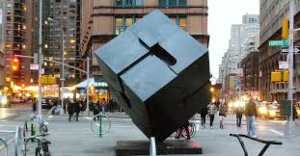
There are no plaques anywhere in the intersection that I know of; so no reference to the Actor’s Riot. I have an idea though, a remedy. Instead of installing just a plaque maybe the black manually-revolvable cube that is The Alamo art work can be replaced by a giant revolving cobblestone. Then maybe a plaque could be placed beneath it when people wonder, “What’s with the giant brick?” It could be a reminder of the kind of events that went on right there, that unfortunately still goes on all around us.
